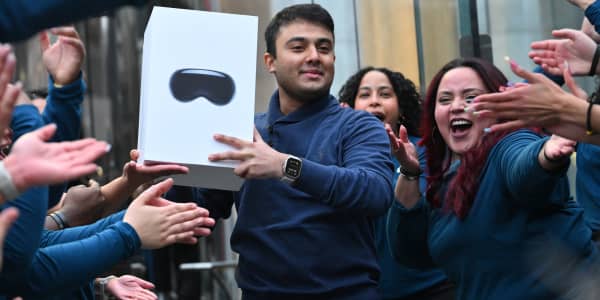After a passenger infected with the novel coronavirus boarded the Diamond Princess cruise ship in January, the virus quickly spread, eventually infecting at least 712 and killing seven. Critics labeled the ship quarantined in Yokohama a floating petri dish, and at least one Japanese expert attributed the explosion of cases to food trays passed out by infected crew. Could robots have made a difference?
As countries around the world grapple with COVID-19, front line medical workers are deploying robots, telemedicine and other technologies to help contain the pandemic. China and Spain have used drones to monitor people during lockdown campaigns, while South Korea has deployed them to help disinfect areas in Daegu, an epidemic hotspot. Antwork, a group company of Japanese industrial drone maker Terra Drone, flew medical samples and quarantine materials in China's Xinchang in February during the height of the epidemic.
Earlier this month, a field hospital staffed by robots opened in the Hongshan Sports Center in Wuhan, China, where the pandemic began. Dubbed the Smart Field Hospital, the facility is a project involving Wuhan Wuchang Hospital, China Mobile and CloudMinds, a maker of cloud robotics systems based in China and the U.S. The Smart Field Hospital is a trial aimed at relieving exhausted health-care workers even as the outbreak in China slowed in recent weeks.
All medical services in the facility were carried out by robots and other IoT devices. Patients entering were screened by connected 5G thermometers to alert staff for anyone feverish. Patients wore smart bracelets and rings that synced with CloudMinds' AI platform so their vital signs, including temperature, heart rate and blood oxygen levels, could be monitored. Doctors and nurses also wore the devices to catch any early signs of infection.
Meanwhile, other robots provided food, drinks and medicine to patients, as well as information and entertainment through dancing, and still other autonomous droids sprayed disinfectant and cleaned the floors.
The field hospital is one of several in Wuhan designed to accommodate some 20,000 patients if regular hospitals are overburdened. The facility and its robots are now on standby in case there's a resurgence in cases, according to CloudMinds.
Autonomous carts that can carry food or other items are nothing new; they've been in use at a growing number of hotels around the world. The experiment was part of CloudMinds' deployment of more than 100 robots to Chinese hospitals, hotels and schools. Getting them into Wuhan involved flying to an airport in Changsha, driving 373 miles and getting through multiple government checkpoints to enter the city, according to the company.
Robots that were modified specifically for the coronavirus fight include a humanoid called Cloud Ginger (aka XR-1) and the Smart Transportation Robot, which can carry food and medicine to patients from health-care providers without person-to-person contact, which is the overall goal.
"Bored patients in quarantine found the humanoid robots such as Cloud Ginger very helpful, as they offered useful information and much needed interaction and entertainment," says CloudMinds founder and CEO Bill Huang. "Doctors have found the robots and smart devices helpful in monitoring patient vital signs remotely without direct contact."
UVD Robots is another robotics company, based in Odense, Denmark, that has sent hundreds of robots to the front lines in the battle against coronavirus. It has dispatched disinfection robots to Wuhan as well as hospitals in Rome and Veneto, a region in northern Italy that has been hard hit by the epidemic. The machines emit powerful ultraviolet light that can decontaminate surfaces By tearing apart strands of virus DNA. After mapping their environment, such as hospital corridors and patient rooms, they move around autonomously guided by lidar, shining 360-degree UV-C light from a mast.
The UV units can operate for roughly 2.5 hours on a charge and disinfect about nine or 10 rooms, according to the Danish company. They can kill 99.99% of bacteria in 10 minutes and are also effective against viruses.
"The UVD Robot will kill the coronavirus, as it has a proven efficacy against MERS CoV and MHV-A59, showing over 6 log reductions in viral particles within 30 minutes," says UVD spokesperson Camilla Harkjær Frederiksen, adding that truckloads of robots are being shipped every week.
The company is also seeing interest from the U.S., not only hospitals but prisons, hotels and airports. "It's ideal for disinfection of large premises. You can map large areas and have the UVD Robot doing disinfection in autonomous mode, and thereby protecting staff and guests," she said.
Texas-based health-care services company Xenex Disinfection Services is also sending virus-zapping robots to East Asia and Italy, as well as Houston. The Westin Houston Medical Center is rolling out Xenex's LightStrike robots, which use UV light to disinfect guest rooms and common areas of coronavirus. The company says its robots can disinfect dozens of rooms per day per robot. It has provided hospitals with disinfection protocols, such as operating the UV robots near the emergency department or in ambulances if suspected coronavirus patients were present.
Xenex says it has thousands of robots in operation and it's ramping up U.S. production. Its orders have jumped 400% in the first quarter of this year against all of 2019. The majority of those orders have been from overseas — Italy, Japan, Singapore, Thailand and South Korea.
"Hundreds of our customers are treating suspect (and now confirmed) coronavirus patients and using our robots to disinfect rooms where those patients are treated," says Xenex CEO Morris Miller. "What makes our robots different is the use of pulsed xenon to create intense flashes of germicidal UV light."
Telemedicine rediscovered
Telehealth is another technology that's been around for years but is finding new demand. In China, JD Health, a subsidiary of e-commerce giant JD.com, has seen monthly consultations for its online health platform grow tenfold since the coronavirus epidemic began, according to The Economist. Last week President Donald Trump said federal rules will be waived so that more doctors can provide patient care through video chats and other means.
Hospitals such as Rush University Medical Center in Chicago and George Washington University Hospital in Washington, D.C., are using telemedicine to help screen patients for possible coronavirus cases. Telehealth companies are struggling to meet surging demand for their services.
Minneapolis-based Zipnosis is deploying online questionnaires for patients that doctors can use to quickly distinguish COVID-19 from other respiratory illnesses; the interaction is often asynchronous, meaning doctors review the information after it's submitted. The platform was also used in the 2017 measles outbreak in the U.S., and the company says providers take an average of 1 minute, 29 seconds to assess a patient through the service.
"Providers can take care of many, many patients quickly with accurate information, which has already proven to be essential for health systems needing to scale to meet patient demands from COVID-19," says Lisa Ide, chief medical officer at Zipnosis.
She adds, "We work with a health system in Washington state, for example, that opted to direct all COVID-19 visits to asynchronous visits (versus video or phone synchronous virtual visits) because their providers couldn't meet the demand for synchronous care due to the much longer clinical work time. When they transition to asynchronous only, they found with only a handful of providers that they could handle a 400-plus daily visit volume with asynchronous care."
More from Tech Drivers:
How 5G promises to turbocharge Apple stock
US-China trade deal effect on Silicon Valley
T-Mobile and Sprint merger may spark M&A
Automation and communication technologies are becoming key in the struggle to put a lid on the coronavirus pandemic, according to experts.
"Robots and telemedicine are great tools, but often supplemental to basic infection prevention measures," says Saskia Popescu, an epidemiologist and infection-prevention specialist based in Phoenix. "I think telemedicine can help reduce the strain if there are physician shortages, or help reduce use of personal protective equipment in some cases (i.e., less people going in and out of the patient's room). Technologies can help add an extra layer of infection prevention efforts —UV disinfection is one."





